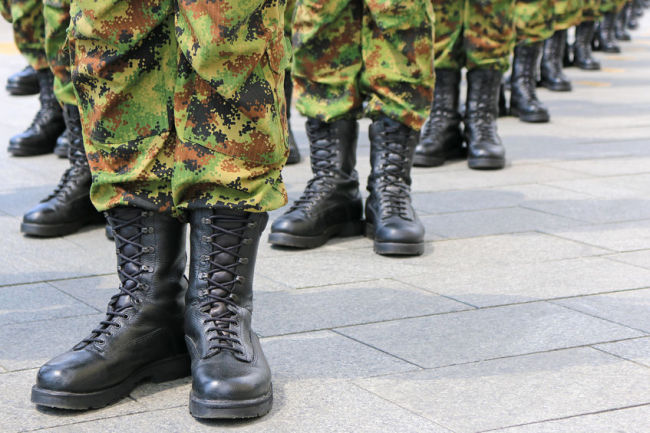In peacetime, South Korea is in charge of its military forces. But when a war breaks out on the Korean Peninsula, the US is to take control of both South Korean military forces and the Americans stationed here.
During his campaign, President Moon Jae-in had pledged to speed up the transfer of the wartime operation control, or OPCON, delayed by his predecessor. He has just got a major boost for the plan: US President Donald Trump’s consent.
During their summit last week, Moon and Trump agreed to work “expeditiously” to have South Korea exercise its authority to lead military operations during a war, based on the proper conditions.
But questions remain including how quickly the transfer could happen and what challenges the process would present.
The OPCON transfer has been a typical liberal-conservative flashpoint, with the former insisting on “sovereign rights” in the military and the latter more concerned about the South’s defense capabilities to face the relentless military threats from North Korea. The two Koreas are technically still at war, as the 1950-53 Korean War ended in a cease-fire, not a peace treaty.
To realize the speedier transfer of OPCON, Moon has vowed efforts to acquire “critical military capabilities necessary to lead the combined defense,” including its pre-emptive strike system, known as “Kill Chain,” and its low-tier, multiple-interception anti-missile system, known as Korea Air and Missile Defense.
 |
(123rf) |
The agreement is expected to move up the timeline for the OPCON transfer, which was postponed by former President Park Geun-hye in 2014. Park decided to delay the transfer until the South Korean forces secure critical military capabilities and the security environment around the peninsula is conducive to a stable OPCON handover. She did not fix a date for the transfer.
The measure was rebuked as an “indefinite postponement’ by liberal-minded scholars and politicians, including Moon who criticized the measure as negligence of duty as a sovereign state. Moon pledged on his campaign trail to complete the OPCON transfer within his single-term, five year presidency, if elected as president.
In an interview with the Washington Post last month, President Moon reiterated that South Korea should exercise its sovereign right to assume operational command of its forces, although he did not specify a detailed timeline for the measure.
But there are obstacles for Moon to complete the transfer by the end of his term, experts said.
One of them is whether South Korea will be able to secure enough money by 2022 for accelerating its efforts to acquire “critical military capabilities,” a pre-requisite for the condition-based OPCON transfer.
According to the military, about 78 trillion won ($68 billion) is allocated for the five-year project to advance its defense capabilities. If the government seeks to move up the deployment of Kill Chain and KAMD, the military will need more money from taxpayers.
The military would even require more defense budget if North Korea’s missile program poses a direct threat to the South. Pyongyang is thought to have developed a liquid-fueled ballistic missile capable of reaching Alaska and a solid-fueled version designed to avoid satellites’ detection.
Some military officials stressed that South Korea’s efforts to create a stable security condition between the two Koreas and in the Northeast Asia region is much more conducive to a speedier OPCON handover than acquiring state-of-the-art military equipment
“I don’t think military equipment is a big issue. What is important is whether we can get cooperation from neighboring countries to address North Korea’s missile and nuclear threats,’ a retired Air Force general told the Korea Herald on the condition of anonymity.
By Yeo Jun-suk (
jasonyeo@heraldcorp.com)








